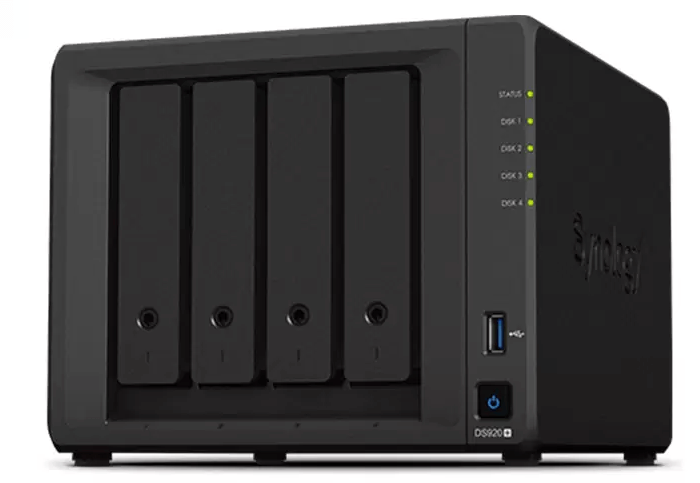Can a NAS drive be connected directly to a computer? This guide reveals simple methods for direct NAS connection to a laptop or PC. Skip the router and network setup to experience enhanced file sharing, faster access speeds, and secure storage. Ideal for streamlined workflows.

Effective file access and storage are more important than ever in the fast-paced digital world of today. This brings up an often asked question: is it possible to connect a NAS device straight to a computer? Yes, and it's much easier than you may imagine! Directly attaching a NAS drive to a computer provides faster access, improved security, and eliminates the need for a network, whether you're handling corporate information or working on a home project. Let's examine the significance of this and how to accomplish it.

A NAS (Network-Attached Storage) drive is essentially a personal cloud for storing and sharing files. Unlike USB drives or external hard disks, NAS drives are typically designed to connect via a network. However, some scenarios—like poor network availability or specific use cases—make direct connection preferable.
Directly connecting a NAS drive to a computer offers multiple advantages:
Whether you’re a tech enthusiast or a casual user, understanding how to connect a NAS drive to a computer directly can save you time and hassle.
To answer this question definitively: Yes! While routers are typically part of a NAS setup, they are not mandatory for a direct connection. This setup is particularly beneficial for temporary use cases like quick file transfers or isolated data recovery. Comparing both methods, using a router provides network flexibility, whereas direct connection emphasizes speed and simplicity.
If you're looking to avoid the usual network setup, directly connecting your NAS drive to a computer is straightforward. Follow these steps for seamless integration:
A direct NAS connection to a laptop is often ideal for remote workers, students, or anyone who values mobility. Laptops with Ethernet ports can easily link to a NAS drive for high-speed file access. If your laptop lacks an Ethernet port, adapters (such as USB-to-Ethernet) can bridge the gap.
Because of their intuitive design, Synology NAS machines are among the most well-liked ones available. To connect a Synology NAS directly to a PC, follow these steps:
How does directly connecting a NAS drive differ from using a network?
A: When you directly connect a NAS drive to your computer, it creates a one-to-one connection. This method eliminates the need for a router or switch, resulting in faster data transfer speeds and simplified setup. In contrast, using a network involves routing data through a central device, which may introduce latency.
Can a NAS drive be connected directly to a computer if it’s an older model?
A: Yes, older NAS models can often be connected directly, but you may need to check the connection options available. Most older NAS drives support Ethernet, which is suitable for direct links. However, the setup might require additional configuration, such as assigning static IP addresses.
Is it possible to directly connect multiple NAS drives to one computer?
A: Absolutely! By using multiple Ethernet ports or a network switch, you can connect several NAS drives to one computer. Each NAS will need a unique static IP address to avoid conflicts, and you’ll manage them separately through their respective interfaces.
How to connect a NAS drive to a computer directly without losing data?
A: To avoid data loss, ensure the NAS is powered off during connection setup. Once connected, verify the NAS interface on your computer to ensure files are accessible. It’s always a good idea to back up important files before modifying connections.
What are common issues when connecting a NAS directly to a PC?
A: Common problems include incompatible IP settings, unrecognized devices, or outdated firmware. These can usually be resolved by updating software, ensuring static IP compatibility, and restarting both devices.
Can a NAS drive be connected directly to a computer using Wi-Fi?
A: No, direct connections typically require Ethernet cables. However, once connected to a router, a NAS can be accessed wirelessly via Wi-Fi, which is not the same as a direct connection.
This article addresses the question “Can a NAS drive be connected directly to a computer?”. If you would like to protect your NAS files online, you can try the comprehensive multiple cloud storage manager - MultCloud. It's extremely useful because it allows you to move files between clouds directly, including a NAS drive (Synology or QNAP NAS). Besides, it supports more than 40 different cloud services, including Google Drive, OneDrive, Dropbox, Box, Google Photos, iCloud Photos, FTP, WebDAV, iCloud Drive, pCloud, Amazon S3, 4shared, Icedrive, Wasabi, ownCloud, Backblaze, IDrive e2, Box for Business, Google Workspace, Gmail, Outlook, MySQL, FTP/SFTP, and more.
Trusted by over 3 million users, MultCloud provides multiple functions to move files between clouds, like cloud to cloud backup, sync, transfer, share, copy to, even team transfer, etc. For instance, it allows for seamless file transfers from cloud drives like moving Synology NAS to OneDrive without downloading and re-uploading files. MultCloud also enables you to access and manage all your cloud accounts via a single application.
By the end of this guide, you should have a clear understanding of can a NAS drive be connected directly to a computer and the various benefits, methods, and solutions for maximizing your NAS experience. Whether for personal use or business, a direct NAS setup opens up a world of possibilities for file management and storage efficiency.